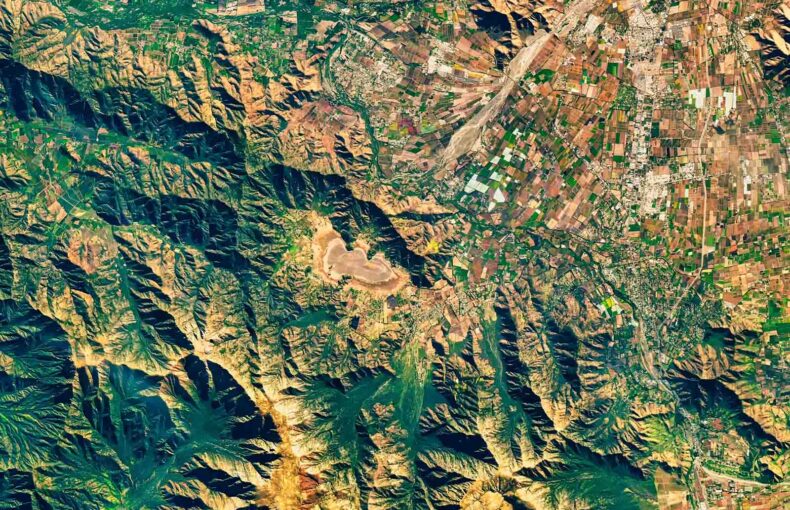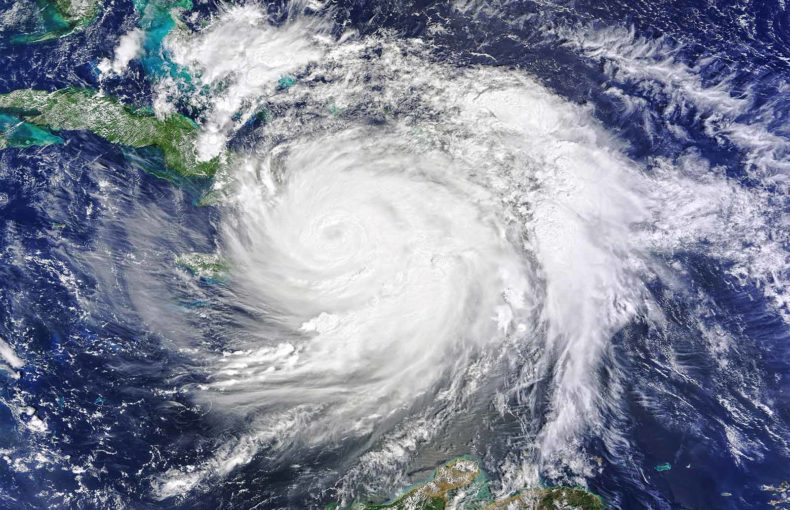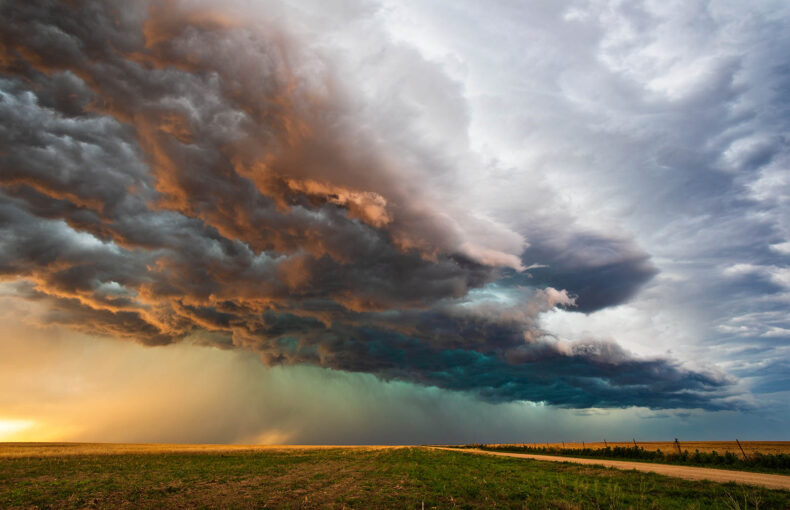As renewable energy grows, so does demand for weather data and analytics
A look at how wind and solar energy use weather forecasts for a broad range of applications, from site planning, to daily operations, to maintenance.
Growth is projected for every aspect of the renewable energy market: supply, demand, efficiency, and profitability. Most of that growth will happen in the wind and solar sectors. In 30 U.S. states, renewables generate more energy than coal or nuclear. In 2019 alone, the world’s wind energy capacity expanded 19%.
Weather data and forecasts affect nearly every aspect of the wind and solar sector, from where facilities are located, to estimates of energy production, to daily operations choices, to the scheduling of maintenance. The more accurate the weather forecasts used are, the more efficiently these operations run and the more money they save.
In this short piece, we’ll give an overview of how wind and solar energy producers make use of weather forecasts, with some emphasis on recent research and technology news that indicate how rapidly this industry is changing. First we’ll talk about some general aspects that apply to wind and solar, and then move on to specific aspects of each industry.
Predicting accurate energy generation
For all energy producers, it’s important to have estimates of how much energy they’ll be able to generate. Energy producers have contracts with the electrical grid to supply a certain amount of power at a certain time. Some of these contracts are quite short-term, with producers committing to a certain amount of energy a few hours in the future.
The exact downsides of inaccurate energy generation forecasting will depend on the nature of the market and laws in a region, but in general the main risks are:
- Creating less energy than expected: besides making less money, there may be energy-imbalance penalties, which are used to incentivize accurate load forecasts for the grid’s benefit.
- Creating more energy than expected: this may result in the producer having to sell that energy cheaply on the market or, worst case, have it be wasted entirely if the energy can’t be stored or they can’t find a buyer.
Predicting energy production is easy for traditional power plants like coal and nuclear; they can easily control energy production. This is much harder for solar and wind facilities, which are inherently volatile. This is why accurate weather forecasts are so important. (And we’ll look in a little bit about operational differences between wind and solar.)
Interestingly, as wind and solar energy become more ubiquitous, the importance of their ability to forecast production also grows. As wind and solar make up a larger percentage of the grid supply, it’s increasingly important that they forecast well and operate more like traditional non-renewable facilities, so that grid operators can in turn also plan well. It’s also becoming more common to implement energy imbalance penalties on renewable energy operators, which will put additional pressure on these sectors to use more accurate weather forecasts.
Wind farm construction and planning for offshore wind farms
Wind farms are located in remote areas that have consistent, year-round wind. All historical weather data that might affect energy production is examined to arrive at energy generation estimates. Planners look at wind speed, wind consistency, variance in wind (highs and lows), and wind measurements at different elevations.
In some locations, depending on the topography, the wind can vary a lot over very short distances, meaning turbine placement can require in-depth analysis of wind patterns. Unique wind patterns will also dictate unique arrangements of the turbines.
The industry is attempting to do more high-altitude wind energy collection because high-altitude winds are steadier and of greater velocity. These methods can include taller turbines and also airborne wind energy (AWE) devices, like kites or balloons. There is much research being devoted to more efficient ways to harness this wind (for example, this 2017 study). And there is a growing demand for more comprehensive wind forecasts covering larger (higher altitude) regions. One forecasting technology of interest is radio occultation (GPS-RO), which uses satellites to get high resolution measurements of high-altitude atmospheric properties at a better consistency than weather balloons can.
Wind farm operations
As mentioned, it’s important for both wind and solar to try to accurately forecast energy production. The wind sector has unique challenges because wind is so volatile, and this means operators must keep a close eye on current wind state and near-future wind forecasts. The unpredictability of wind creates many issues for both wind utility operators and grid operators.
Rapid changes in wind speed are called “ramp events”, and these events require operators to ramp generators up or down to try to balance energy creation and not waste it. But due to several factors (e.g., commitments to the grid, inability to ramp down generators quickly), facilities will produce too much energy.
For a great explanation of the many factors in this area, we recommend this 2011 study on wind forecasting by the National Renewable Energy Laboratory. To quote from there:
Wind energy complicates the short and long-term planning goals of least-cost, reliable operations. Due to the uncertainty of wind energy production, inherent suboptimal commitment and dispatch associated with imperfect wind forecasts drives up costs.
Wind energy forecasting helps mitigate these costs. Wind integration studies for [some companies] have projected increasing costs as more wind is installed on the system due to forecast error. It follows that reducing forecast error would reduce these costs.
Share on Facebook Share on Twitter Share on LinkedIn
In short, better wind forecasting means huge efficiencies and savings — increasingly so as wind energy becomes more prevalent. As you’d expect for such a competitive industry, many products and research projects are focused on this area. A couple of examples:
- A 2018 study using machine learning techniques to improve forecasts based on historical wind data.
- A 2020 proposal for improving wind forecasts using machine learning strategies.
For a concrete example of the types of solutions being used by the industry, here’s a Spire Global tutorial on how to retrieve wind forecasts for different altitudes.
A visualization of Spire weather forecasting for wind farm applications.
Wind farm maintenance
For wind farms, there are two main types of maintenance: planned maintenance and emergency maintenance.
For planned, regular maintenance, it’s important to plan it several months or weeks out when weather is expected to be calmest. Extreme weather can mean various costs, including delays in work, lost income from out-of-commission turbines, harm to equipment, and injuries to workers. Planning for calm weather windows is both the safest strategy for workers and equipment and also ensures that work is done when energy production is least.
This is especially important for maintenance being done at offshore wind farms, where the seas present bigger risks. One study estimated that “up to one third of the total cost of energy from offshore wind generation is contributed by operation and maintenance.” Large offshore projects, like replacement of turbines, can take days or even weeks, depending on the facility and weather conditions.
For more emergency-type maintenance, there are more hazards. There can be pressure to fix equipment quickly because every day a turbine is out of commission, money is being lost, and there may not be an optimal calm-weather window in the near future. If maintenance must occur in stormy areas, lightning is the biggest risk, and workers monitor nearby lightning strikes closely. For offshore facilities, the situation is especially dangerous. The better the weather forecasts used are, the more a company minimizes dangers and risks in choosing a good window for maintenance.
Solar farm operations
Just as with wind, it’s important for solar farms to predict their energy output. Solar farms look at seasonal shifts in sunlight, which are well understood. More importantly, they look at the hour-by-hour and day-by-day changes in solar irradiance, which are harder to predict. To do this, they rely on weather data of many types (such as temperature, moisture, cloud cover, air pressure, more) to understand how much sunlight is expected to reach solar panels at a given time.
For example, here is a visualization from Spire Weather’s Web Map Service (WMS) image API showing 10 days of Global Total Cloud Cover (%) focused on the US. In addition to incoming solar radiation which Spire also provides, cloud cover is critical for solar farm applications.
Total Cloud Cover (%) 10 Day Global Forecast shown with Spire WMS
As expected in such a rapidly growing industry, there’s a lot of research and investment in better prediction of solar irradiance. One recent example of this is a technique called SCOPE: Spectral Cloud Optical Property Estimation, described in the Journal of Renewable and Sustainable Energy. This technique uses satellites to measure several cloud properties, including the cloud height, the cloud thickness (vertical height), and the cloud’s optical depth (a measurement of how it modifies light passing through it).
Another example of work being done in this area is the use of machine learning to find correlations between various weather measurements and solar radiation. For example, in a 2011 paper titled Predicting Solar Generation from Weather Forecasts Using Machine Learning, the team found that their machine learning models making 3-hours-in-future forecasts were “27% more accurate” than existing forecast-based models.
For an example of how solar energy companies are using weather data, here’s a Spire Global tutorial on getting a forecast useful for solar applications.
Visualization of Spire weather forecasting for solar application.
As with wind energy, machine learning and artificial intelligence approaches are being applied to forecasting solar energy.
Energy trading
Not directly related to renewable energy operations, but worth mentioning: weather forecasting also has potential for being used by energy traders to predict and take advantage of upcoming swings in energy costs. This is an emerging market that’s still adjusting to the rapidly changing reality of renewable energy and how it differs substantially from traditional markets.
Just the beginning
This has been a brief overview of the main ways the wind energy and solar energy industries benefit from accurate weather forecasts.
At Spire, we are dedicated to staying on the cutting edge of satellite data collection and weather forecasting technology. We operate one of the largest private satellite constellations in the world, which provides a unique global weather observation network including remote regions and oceans. Spire’s unrivaled radio occultation technology powers Spire’s weather models and sets a new benchmark for weather forecasts.
 Written by
Written by


